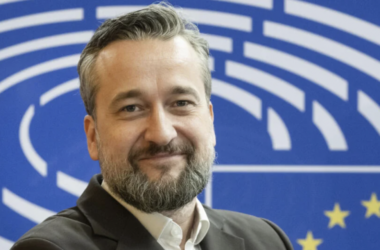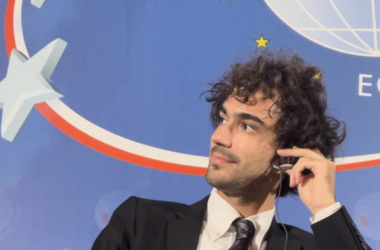Post-liberalism envisions a society rooted in a balance between rights and duties, where liberty—a core concept for any conservative—is not radicalized into the kind of extreme individualism promoted by liberal thought, which has shaped much of contemporary Western society. Instead, liberty is harmonized with the needs of the broader community and other foundational values. These values often translate into rights accompanied by corresponding responsibilities.
This vision offers fertile ground for conservative reflection, providing a viable alternative to hyper-individualism and enriching the intellectual and social framework of conservatism. However, the creation of a genuine alternative to neoliberalism—or to the progressive liberalism that has dominated the last two decades—is still a formidable challenge. It’s important to distinguish between traditional neoliberalism, historically championed by conservative parties, and the contemporary variant of progressive liberalism, which seeks to reshape customs and identities to mold individuals into mere market products. For any conservative, this is simply unacceptable.
With Trump’s return to the White House, how do you foresee his policies influencing Europe, particularly in terms of foreign relations and defense strategy?
European nations must now recognize a shifting global landscape. The United States is redefining its role in the world—not through retreat into isolationism, as some fear, but by stepping back from its historical role as the guardian of Western Europe, a position it held since the Cold War. This change will impact trade policies and defense strategies.
Europe must protect its interests and, like Italy is attempting to do, engage in pragmatic negotiation with the United States under Trump, avoiding an all-out confrontation. Dialogue and diplomacy must prevail.
What are your thoughts on Trump’s last meetings with Zelensky?
Beyond the media spectacle—which will be etched in history for its rare public acrimony—the encounter underscores the clash between two fundamentally irreconcilable visions on how to end the war. The Trump administration has made it a priority to conclude the conflict, which inevitably requires Ukraine to accept compromises grounded in the current military and geopolitical reality, including its reliance on U.S. military aid.
Is there a shift in how the American right views the war in Ukraine?
On the contrary, the Trump administration’s stance aligns with the perspective the American right has held since the conflict’s outset. The American right sees Ukraine as the product of diplomatic failure by Democratic administrations and views the return to Cold War dynamics as a strategic misstep, especially given the broader confrontation with China, seen as America’s true rival. From this perspective, a pivot toward the Pacific—Taiwan in particular—takes precedence, explaining the relative disengagement from Europe.
Recently, Macron has adopted a more assertive, pro-war position regarding Ukraine. How should the European right respond to these developments?
We must first recognize that there is no single, unified “right-wing” position across all European states. However, the European right must strive to prevent a dangerous escalation driven by muscular European interventions, such as the deployment of troops to Ukraine. Macron, leveraging France’s status as a nuclear power, is attempting once again to assert dominance over Europe.
The paradigm has shifted: whereas strength in Europe was once defined by industrial output, GDP, and other economic indicators, today it is measured by military capability and readiness. This shift places France in a more advantageous position than Germany.
Is there a risk that under leaders like Macron, Europe is heading toward a more militarized and interventionist future?
Macron lacks the political capital to shape Europe decisively. This was evident when British Prime Minister Sir Keir Starmer swiftly eclipsed him on the international stage—despite the UK no longer being part of the EU.
Some argue that Italy could serve as a diplomatic bridge between Trump’s America, the EU, and even Russia. Is this a realistic foreign policy strategy for Italy?
Italy’s political rapport with the United States is largely due to the personal and ideological alignment between our Prime Minister and the U.S. President. This relationship, if managed prudently, could serve Europe’s interests by facilitating commercial negotiations with the U.S.
As for Russia, the situation is more complex. While Italy has historically played a constructive diplomatic role, its unequivocal support for Kyiv places it in clear opposition to Moscow. Recent verbal clashes with the Kremlin underscore this shift, making short-term rapprochement unlikely.
Could Italy leverage its position to promote a more pragmatic and less ideological approach to the war in Ukraine?
At this stage of the conflict, a major change in strategic approach is unlikely. The only viable objective is to pursue a ceasefire, which could serve as the precursor to a broader peace agreement.
With conservative parties gaining ground across Europe, how do you assess the current state of anti-immigration policies in the EU?
The results of the latest European elections send a clear message: European citizens demand stricter measures against irregular immigration and greater attention to public security. The EU is slowly confronting this reality, but it is too early to say whether this recognition will lead to meaningful policy shifts.
How can Italy and its allies promote stronger and more unified border control policies, despite resistance from liberal EU members?
It is a difficult task, but one that Italy is actively pursuing. European states increasingly act autonomously to bypass the ideological constraints of Brussels. Italy’s strategy has been to propose a common European initiative to address the challenge of protecting the EU’s external borders.
How do you assess the continued influence of woke culture in Italy and the broader EU?
Woke culture has struggled to gain traction in Italy, largely due to our unique historical and cultural identity. This does not mean, however, that progressive forces haven’t attempted to introduce it. Fortunately, even segments of the Italian left-wing intelligentsia have opposed this trend, making it easier to resist its advance.
How should the conservative movement respond to ongoing progressive cultural initiatives?
The right must develop a coherent cultural strategy that deconstructs the false myths underpinning these theories, which pose an internal threat to Western values and identity.
Inspired by thinkers like Mouffe and Laclau, the left has successfully employed a “chain of equivalence” to unify various causes under a populist front. Could the right adopt a similar strategy?
The right cannot simply adopt the categories of the left. Conservative forces are, by nature, more oriented toward governance than protest, and their electorates are fundamentally different. However, the center-right and right-wing parties in Europe can overcome their minor divisions and work toward unity, much like the successful center-right coalition model in Italy.
How can the right weave together issues such as anti-immigration, family values, national sovereignty, and economic protectionism into a coherent and compelling message against the new left?
These are diverse issues, but each addresses a deep concern shared by citizens in this historical moment. The right must interpret and champion these causes. On economic protectionism, however, conservatives must remain grounded in realism: in today’s globalized society, full-scale protectionism is unfeasible. We must avoid anachronism.
Recent protests—particularly those led by youth—highlight the strength of left-wing populism and what Hardt and Negri call the “multitude.” How can the right respond without alienating younger voters?
The right must have the courage to challenge the dominant narrative through which the left appeals to youth. Fear of alienating young voters can become a political weakness. In our “liquid society”—to borrow Zygmunt Bauman’s term—conservatism offers stability, a refuge from the liberal and politically correct utopias advanced by the left.
Are there strategies the right can use to redirect youth energy away from leftist populism and toward conservative activism?
Conservatism’s strength lies in authenticity. The right must present its values sincerely, without mimicry or compromise. While the right encompasses a range of parties and strategies, its enduring appeal lies in its rootedness in tradition, identity, and realism.
With left-wing populist movements gaining visibility across Europe, what are the most effective strategies for the right to counter them?
Left-populist movements are currently in decline, largely because they fail to address two of the most pressing concerns for Europeans: immigration and radical green policies. The right is gaining ground precisely because it offers concrete responses to these fears. Nevertheless, we must also recognize that the era of populism as a political paradigm may be drawing to a close.




